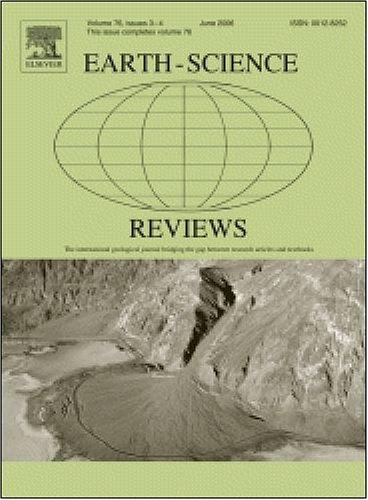Applying astronomical solutions and Milanković forcing in the Earth sciences
IF 10.8
1区 地球科学
Q1 GEOSCIENCES, MULTIDISCIPLINARY
引用次数: 0
Abstract
Astronomical solutions provide calculated orbital and rotational parameters of solar system bodies based on the dynamics and physics of the solar system. Application of astronomical solutions in the Earth sciences has revolutionized our understanding in at least two areas of active research. (i) The Astronomical (or Milanković) forcing of climate on time scales 10 kyr and (ii) the dating of geologic archives. The latter has permitted the development of the astronomical time scale, widely used today to reconstruct highly accurate geological dates and chronologies. The tasks of computing vs. applying astronomical solutions are usually performed by investigators from different backgrounds, which has led to confusion and recent inaccurate results on the side of the applications. Here we review astronomical solutions and Milanković forcing in the Earth sciences, primarily aiming at clarifying the astronomical basis, applicability, and limitations of the solutions. We provide a summary of current up-to-date and outdated astronomical solutions and their valid time span. We discuss the fundamental limits imposed by dynamical solar system chaos on astronomical calculations and geological/astrochronological applications. We illustrate basic features of chaotic behavior using a simple mechanical system, i.e., the driven pendulum. Regarding so-called astronomical “metronomes”, we point out that the current evidence does not support the notion of generally stable and prominent metronomes for universal use in astrochronology and cyclostratigraphy. We also describe amplitude and frequency modulation of astronomical forcing signals and the relation to their expression in cyclostratigraphic sequences. Furthermore, the various quantities and terminology associated with Earth's axial precession are discussed in detail. Finally, we provide some suggestions regarding practical considerations.
在地球科学中应用天文解和米兰科维奇强迫
天文学解决方案根据太阳系的动力学和物理学提供计算出的太阳系天体的轨道和旋转参数。天文学解决方案在地球科学中的应用至少在两个活跃的研究领域彻底改变了我们的理解。(i)在时间尺度上气候的天文强迫(或milankovovic强迫)和(ii)地质档案的年代测定。后者使得天文时标得以发展,如今广泛用于重建高度精确的地质年代和年表。计算与应用天文学解决方案的任务通常由来自不同背景的研究人员执行,这导致了应用方面的混乱和最近的不准确结果。本文回顾了地球科学中的天文学解和米兰科维奇强迫,主要目的是澄清这些解的天文学基础、适用性和局限性。我们提供了当前最新和过时的天文学解决方案及其有效时间跨度的摘要。我们讨论了动态太阳系混沌对天文计算和地质/天文年代学应用的基本限制。我们用一个简单的机械系统,即驱动摆,来说明混沌行为的基本特征。关于所谓的天文“节拍器”,我们指出,目前的证据并不支持一般稳定和突出的节拍器在天体年代学和旋回地层学中普遍使用的概念。本文还描述了天文强迫信号的振幅和频率调制及其在旋回地层序列中的表达关系。此外,还详细讨论了与地球轴向进动有关的各种量和术语。最后,提出了一些实际考虑的建议。
本文章由计算机程序翻译,如有差异,请以英文原文为准。
求助全文
约1分钟内获得全文
求助全文
来源期刊

Earth-Science Reviews
地学-地球科学综合
CiteScore
21.70
自引率
5.80%
发文量
294
审稿时长
15.1 weeks
期刊介绍:
Covering a much wider field than the usual specialist journals, Earth Science Reviews publishes review articles dealing with all aspects of Earth Sciences, and is an important vehicle for allowing readers to see their particular interest related to the Earth Sciences as a whole.
 求助内容:
求助内容: 应助结果提醒方式:
应助结果提醒方式:


